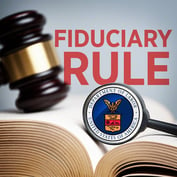Have you ever kicked yourself for missing a spike in small-cap stocks? What about last year’s slide in gold? Thankfully, with every missed moment come new opportunities to capitalize.
Direxion was founded in 1997 on the simple premise of giving advisors and investors the right financial tools to profit from market trends. Today, the company has approximately $7.5 billion in assets and offers leveraged index funds, ETFs and alternative-class funds. The products are aimed at investment advisors and sophisticated investors to help them to effectively manage risk and return in bull and bear markets alike.
Daniel D. O’Neill, Direxion’s CEO, spoke to Research about how advisors are using leveraged and inverse ETFs to profit from today’s most important market developments.
In what type of situations are traders using leverage and inverse ETFs?
Most traders that use leveraged ETFs have a bold opinion regarding the direction of the asset class or sector they plan to trade. They use leveraged ETFs to enhance momentum.
Separately, many use the funds to hedge existing positions. For example, right now there’s a concern about a rising interest rate environment. Direxion has a suit of inverse fixed income products that traders use to hedge the negative impact that a rise in rates can have on their bond portfolio.
Traders find leveraged ETFs useful because they provide them with an efficient use of their capital. If a trader is trying to gain $10,000 worth of exposure to an asset class, they can do it by investing $10,000 into a one beta ETF, or $3,333 into a 3x ETF. It’s important to know that the market risk is the same in both cases, but by using a leveraged fund, the trader is afforded the opportunity to invest the remaining capital in other non-correlating assets. This can help them improve their overall portfolio diversification.
In 2009, FINRA issued its “investor alert” about leverage and inverse ETFs. Do you think people are more educated today compared to back then?
We have always believed that the heavy users of leveraged ETFs have had a strong understanding from the beginning of how the products work, and how they should be properly used. Their behavior in the funds (e.g., short holding periods and high share turnover) has always shown this. We have had a strong commitment to education regarding the products to (1) ensure that all that use them, fully understand them and use them properly, and (2) make sure that those that are ill-suited to use the products, understand that they’re not for every investor.
Through our efforts and the efforts of other products providers, and key industry spokesmen and educators, there are certainly more and more investors and traders that have a greater understanding of how leveraged ETFs work. Of course we understand that as more traders become aware of the products, we as an industry have to welcome them into the space with the education they need to determine if these products are suitable for them. We continue to work with intermediaries and supermarket platforms to provide training and education beyond prospectus material, including printed materials, Web content and video.
Despite ongoing economic problems, European stocks have put together two consecutive years (2012 and 2013) of 20%+ gains. Direxion recently launched a pair of 3x daily bull (EURL) and bear (EURZ) funds targeting Europe. Tell us more.








 March 31, 2014 at 08:00 PM
March 31, 2014 at 08:00 PM










